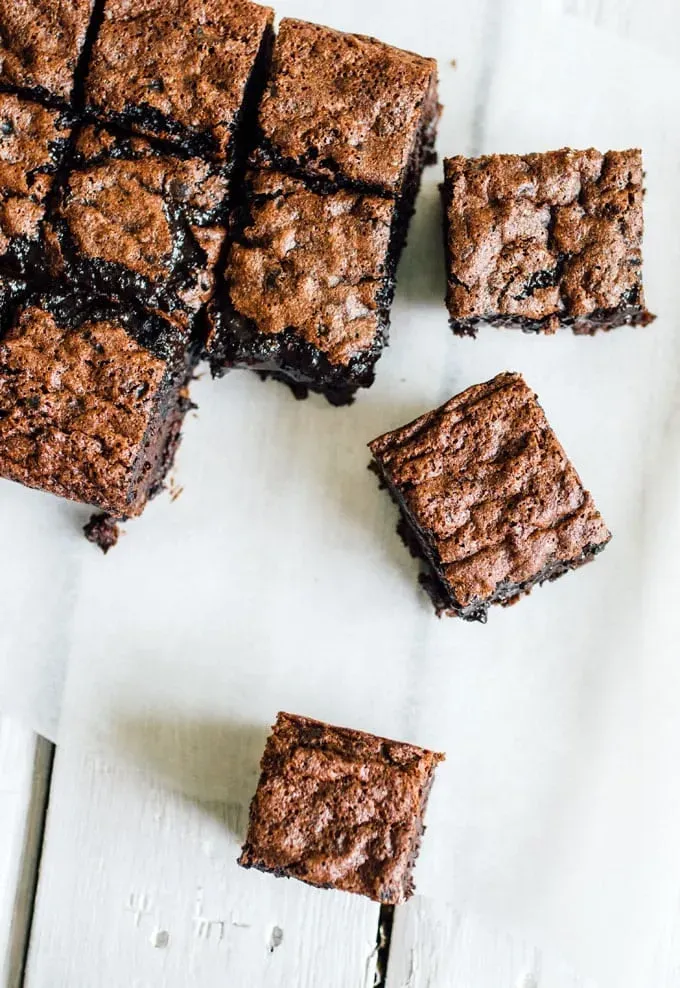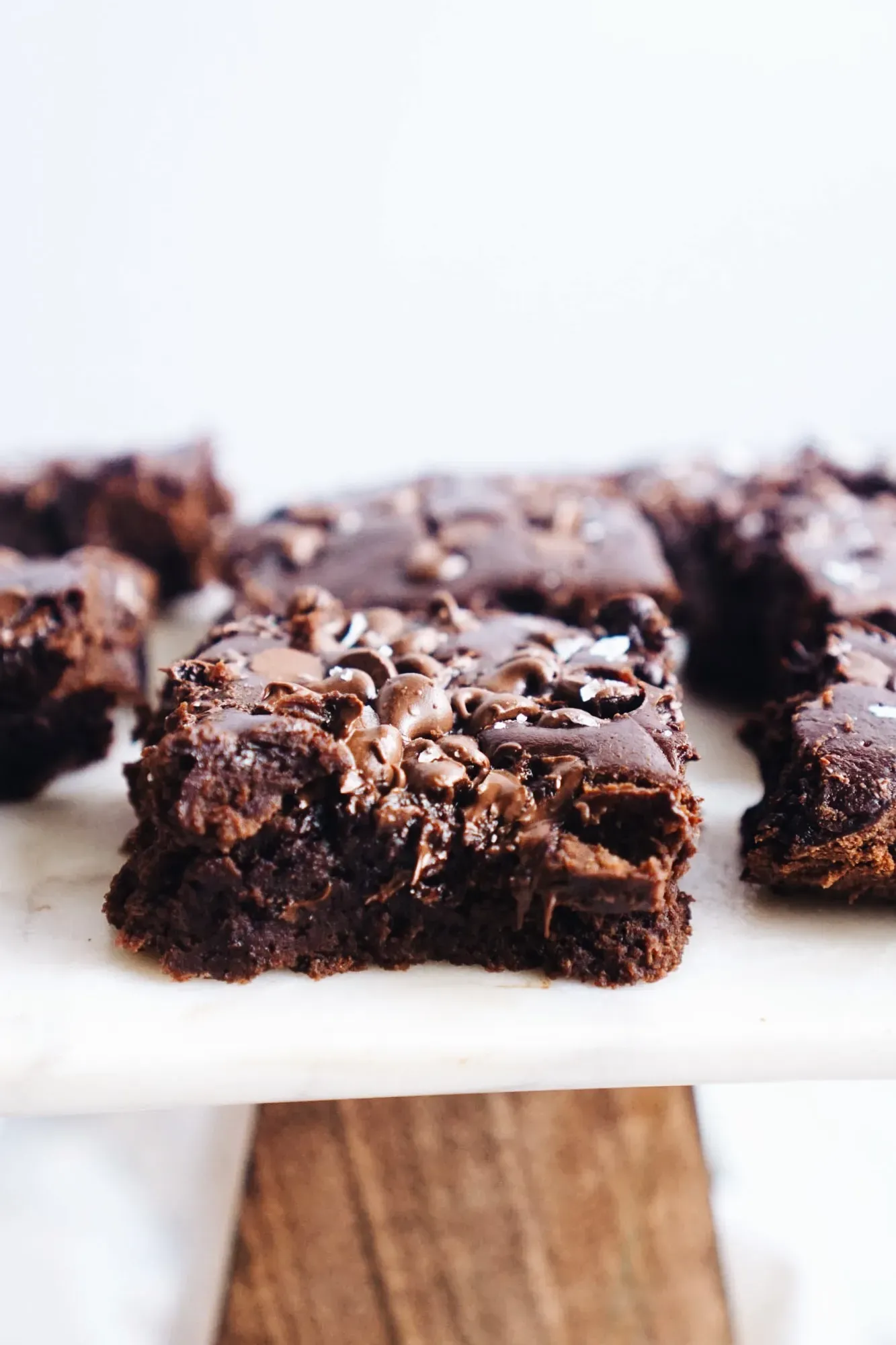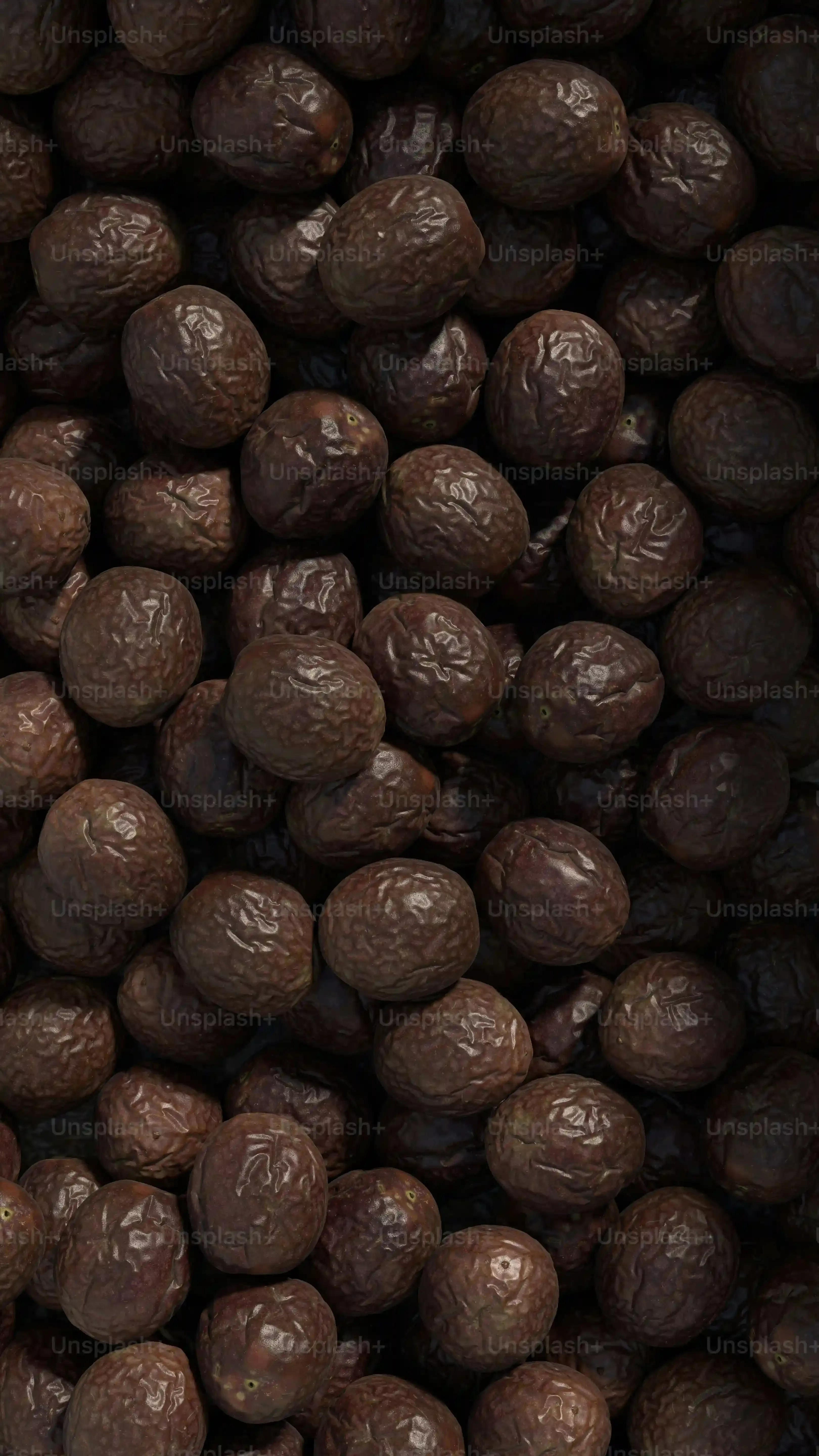Table of Contents
Let's be honest. The phrase "black bean brownies" might make you raise an eyebrow. Beans? In dessert? It sounds like something a health guru cooked up to trick you into eating fiber. But hear me out. Done right,fudgy black bean browniesare not some sad, dry health food imposter. They are genuinely rich, dense, and yes, incredibly fudgy. Think of that perfect brownie texture – slightly gooey in the middle, a little chew on the edges. Black beans, surprisingly, are the secret weapon to achieving that without a speck of wheat flour.
Why Fudgy Black Bean Brownies Work

Why Fudgy Black Bean Brownies Work
so you're skeptical. I get it. When someone first told me about using black beans in brownies, I pictured something gritty and tasting like a sad attempt at being healthy. But the magic behind whyfudgy black bean browniesactually work boils down to a few key things the beans bring to the party. First, they are packed with moisture. This is crucial because that moisture helps create the dense, almost pudding-like texture you want in a truly fudgy brownie, not the cakey kind that crumbles when you look at it funny. They act as a binder, too, holding everything together without the need for traditional flour.
Beyond the moisture and binding, black beans contribute bulk and structure. When you blend them up properly, they disappear into the batter, leaving behind a smooth foundation. This structure is what prevents the brownies from collapsing into a puddle and gives them that satisfying chew. Plus, they have a relatively neutral flavor, especially once combined with cocoa powder and sugar. Any faint bean taste is usually completely masked by the chocolate, which is the goal, right? We're not making bean soup here; we're making brownies.
- Beans add moisture for fudge-like texture.
- They provide structure and bind ingredients.
- Black beans contribute bulk without flour.
- Their mild flavor is easily hidden by chocolate.
Think about what flour does in a traditional brownie. It absorbs liquid, provides structure, and contributes to the rise. Black beans handle the moisture and structure parts admirably, often leading to a denser, morefudgy black bean browniesresult than many flour-based recipes. They also bring a dose of fiber and a bit of protein, which, while not the primary reason we're using them (that's the fudge factor), is a nice bonus. It's less about making them "healthy" and more about using the beans' properties to achieve a superior texture that's also naturally gluten-free.
It's a clever workaround, really. Instead of trying to replicate flour with a blend of starches and gums, you're using a whole food that inherently possesses some of the necessary qualities. It's like finding a shortcut that actually improves the destination. The key is ensuring the beans are rinsed well and blended completely smooth. No one wants little bean chunks in their brownie. Get that step right, and you're well on your way to understanding why these seemingly odd desserts have gained such a following.
Selecting Ingredients for Fudgy Black Bean Brownies

Selecting Ingredients for Fudgy Black Bean Brownies
Picking the Perfect Beans
Alright, let's talk beans. This is arguably the most critical ingredient for achieving trulyfudgy black bean brownies. You absolutely must use canned black beans. Dried beans are great for chili, but they introduce too much variability in moisture content, and frankly, who has time to soak and cook beans just for brownies? Grab a can, about 15 ounces. The non-BPA lined cans are a good call if you're into that. The crucial step here is rinsing. Rinse them like their life depends on it. Get rid of all that starchy liquid they're packed in. I usually dump them in a colander and run cold water over them for a full minute, shaking the colander to make sure every bean gets a shower. This rinsing is key to minimizing any lingering bean flavor.
Don't skip the rinsing. Seriously. A poorly rinsed bean is a one-way ticket to "brownies that taste vaguely like beans," and nobody wants that. Once rinsed, let them drain for another minute while you gather your other stuff. You want the beans to be clean and free of the canning liquid, but they don't need to be bone dry. A little surface moisture is fine. Think of them as little, dark, moisture-delivery systems ready to be transformed.
Chocolate and Sweeteners: The Flavor Core
Next up, the chocolate. This is where the magic happens, masking the bean base and delivering that essential brownie taste. You'll need unsweetened cocoa powder. Not hot cocoa mix, not Dutch-processed unless the recipe specifically calls for it (most standard recipes use natural unsweetened cocoa), but plain, unadulterated cocoa powder. This provides the deep, intense chocolate flavor. The amount matters; too little, and it's weak; too much, and it can become dry. Follow the recipe's measurement closely. For sweetness, manyfudgy black bean browniesrecipes use a liquid sweetener like maple syrup or agave nectar. These work well because they add moisture and blend easily. Granulated sugar can be used, but liquid sweeteners tend to contribute better to the fudgy texture.
Some recipes might call for a mix of sweeteners or even dates. Dates, when soaked and blended, add sweetness and a fantastic stickiness that enhances the fudgy factor. If using dates, ensure they are soft and pitted. Soaking hard dates in hot water for 10 minutes before blending is a pro move. The type and quality of your cocoa and sweetener directly impact the final flavor and texture, so don't skimp here. Use a cocoa powder you actually like the taste of on its own (mixed with a little hot water, maybe). If your cocoa tastes like sadness, your brownies will too.
- Unsweetened cocoa powder is non-negotiable.
- Liquid sweeteners (maple syrup, agave) aid fudgy texture.
- Soaked dates add natural sweetness and stickiness.
- Quality of chocolate and sweetener impacts final taste.
Fats, Binders, and Flavor Boosters
Beyond beans, chocolate, and sweetener, you need fat and binding agents. A neutral-flavored oil is standard – think canola, melted coconut oil (refined, so it doesn't taste like sunscreen), or avocado oil. This fat is crucial for moisture and richness. Some recipes use nut butter, which adds flavor and density, but can make the brownies heavier. Eggs or a flax egg (for vegan versions) act as binders, helping everything hold together and providing a slight lift, though less than in a cakey brownie. Vanilla extract is a must; it enhances the chocolate flavor dramatically. A pinch of salt balances the sweetness and brings out the other flavors.
Baking powder is often included to give a little leavening, preventing the brownies from being completely flat dense bricks, though the goal isn't significant rise. Just enough to give them a pleasant chewiness. Make sure your baking powder isn't ancient and dead in the back of your pantry. Fresh leavening agents matter, even for densefudgy black bean brownies. These seemingly minor ingredients play vital supporting roles in achieving that perfect fudgy outcome.
The Process: Baking Fudgy Black Bean Brownies

The Process: Baking Fudgy Black Bean Brownies
Blending for Brownie Bliss
you've got your rinsed beans and your other wet ingredients lined up. This is where the magic starts to happen, or where it goes horribly wrong if you don't commit. You need a food processor or a high-powered blender for this. A standard blender *might* work, but you risk a less-than-smooth texture, and nobody wants grittyfudgy black bean brownies. Toss the rinsed black beans into the processor first. Add your liquid sweetener (maple syrup, agave, whatever the recipe dictates), your oil, vanilla extract, and any eggs or flax eggs. If your recipe uses soaked dates, they go in now too.
Process this mixture until it is absolutely, unequivocally smooth. We're talking baby food smooth. No lumps, no flecks of bean skin visible. This can take a couple of minutes, and you might need to scrape down the sides a few times. Don't rush this step. A grainy base means grainy brownies, and that defeats the whole purpose. This smooth puree is the foundation for that signature fudgy texture, so make it count. It should look less like bean paste and more like a thick, dark, slightly glossy liquid.
Combining and Preparing to Bake
Once your bean base is silken smooth, it's time to integrate the dry components. In a separate bowl, whisk together your unsweetened cocoa powder, baking powder, and salt. This ensures these dry ingredients are evenly distributed before they hit the wet mixture. Dumping them all into the blender with the wet ingredients can lead to pockets of unmixed cocoa or leavening, resulting in uneven brownies. Once dry ingredients are combined, add them to the bean puree in your food processor or blender. Pulse or process just until everything is combined. Do not overmix.
Overmixing develops gluten in traditional baking, which isn't a concern here, but it can still negatively impact the texture by incorporating too much air or making the batter tough. Stop as soon as you see no streaks of dry ingredients. If your recipe calls for chocolate chips or nuts, fold them in gently by hand in a separate bowl after transferring the batter from the processor. Pour the batter into a prepared baking pan (greased and perhaps lined with parchment paper for easy removal). Spread it evenly. It will be thick. This is normal forfudgy black bean brownies.
- Use a food processor or high-power blender for smooth blending.
- Process wet ingredients until completely smooth, scraping sides as needed.
- Whisk dry ingredients separately before combining with wet.
- Mix wet and dry ingredients just until combined; do not overmix.
- Fold in add-ins like chocolate chips by hand.
- The batter will be thick.
Troubleshooting Common Fudgy Black Bean Brownie Issues
Why Aren't My Fudgy Black Bean Brownies Fudgy?
you followed the steps, pulled them from the oven, and... they're not the gooey, dense squares you dreamed of. They're... cakey. This is perhaps the most common letdown when makingfudgy black bean brownies. The likely culprit is over-baking. Remember, these aren't traditional brownies; they set differently. A toothpick test won't come out with clean crumbs; you want moist crumbs attached, maybe even a little batter. Pull them out when the edges look set but the center still looks slightly underdone or jiggly. They continue to cook as they cool in the hot pan.
Another reason could be too much leavening (baking powder) or not enough fat/moisture. Double-check your measurements, especially the baking powder. Using a liquid sweetener also helps maintain moisture compared to granulated sugar. Ensure your beans were rinsed well but not squeezed dry; they need that inherent moisture. If all else fails, check your oven temperature with a separate thermometer; ovens lie constantly. Baking at the correct temperature for the right amount of time is non-negotiable for that elusive fudge factor.
Help! My Brownies Taste Like Beans or Cardboard
Ah, the dreaded bean flavor. This happens, usually because the beans weren't rinsed thoroughly enough. That starchy canning liquid carries a distinct flavor that can stubbornly linger. Rinsing until the water runs completely clear is essential. Like, really clear. Another cause for off-flavors or a cardboard-like taste can be using old or low-quality cocoa powder. Cocoa is the main flavor driver here; if it tastes dusty and bland, your brownies will too. Invest in decent unsweetened cocoa.
If you're getting a gritty texture, that's a blending issue. Your food processor or blender wasn't powerful enough, or you didn't process the wet ingredients (especially the beans) for long enough. You need that super-smooth puree we talked about earlier. Scrape down the sides, give it another minute or two. Patience in the blending stage prevents texture disasters later. Sometimes, adding a tiny splash of liquid (like almond milk or water) can help the blender catch if it's struggling, but don't add too much and make the batter too thin forfudgy black bean brownies.
- Issue: Cakey texture
- Cause: Over-baking, too much leavening, insufficient fat/moisture
- Fix: Reduce bake time, check measurements, ensure beans are moist, verify oven temp.
- Issue: Beany taste
- Cause: Insufficient rinsing of beans
- Fix: Rinse beans thoroughly until water is clear.
- Issue: Gritty texture
- Cause: Insufficient blending of beans
- Fix: Blend wet ingredients longer until completely smooth.
Storing and Serving Fudgy Black Bean Brownies

Storing and Serving Fudgy Black Bean Brownies
Keeping Your Fudgy Black Bean Brownies Fresh
you've successfully navigated the world of bean-based baking and pulled out a pan of gloriousfudgy black bean brownies. Now, assuming you haven't devoured them all straight from the pan (a valid choice, by the way), you need to store them correctly to maintain that perfect fudgy texture. Room temperature is fine for a day or two, stored in an airtight container. Just stack them carefully with parchment paper in between layers if needed to prevent sticking.
For longer storage, the fridge is your friend. Pop the airtight container in there, and they'll keep well for up to a week. Chilling actually enhances the fudgy density, making them even better in my opinion. It gives them a chance to firm up nicely. Avoid leaving them uncovered, though; the fridge air is dry and will steal that precious moisture, leaving you with something less than fudgy.
- Store in an airtight container.
- Keep at room temperature for 1-2 days.
- Refrigerate for up to 7 days for best texture.
- Use parchment paper between layers if stacking.
Enjoying Your Bean-Powered Treats
Servingfudgy black bean browniesis pretty straightforward, but a few things can elevate the experience. As mentioned, they are excellent chilled, providing a really dense, almost truffle-like bite. Let them sit at room temperature for 10-15 minutes after taking them out of the fridge if you prefer them slightly softer. If you're feeling decadent, a quick zap in the microwave (like 10-15 seconds) brings back that just-baked gooeyness beautifully.
Pair them with a glass of cold milk, a scoop of your favorite ice cream (vanilla or coffee are great), or even a dollop of whipped cream. The deep chocolate flavor stands up well to accompaniments. Don't be afraid to tell people they're made with black beans *after* they've raved about how good they are. It's part of the fun. Watching someone's face go from "wow, these are amazing" to "wait, beans?" is a small, simple pleasure in life.
The Verdict on Black Bean Brownies
So, there you have it. The mystery of the fudgy black bean brownie, demystified. What might have started as a kitchen experiment born of necessity (or maybe just morbid curiosity) turns out to be a legitimate way to bake a truly excellent brownie. They aren't "good for being made with beans"; they're just plain good brownies. The beans provide that essential structure and moisture that delivers on the fudgy promise without needing traditional flour. Give it a shot. You might surprise yourself, and you'll definitely surprise anyone you serve them to after they take their first bite.
